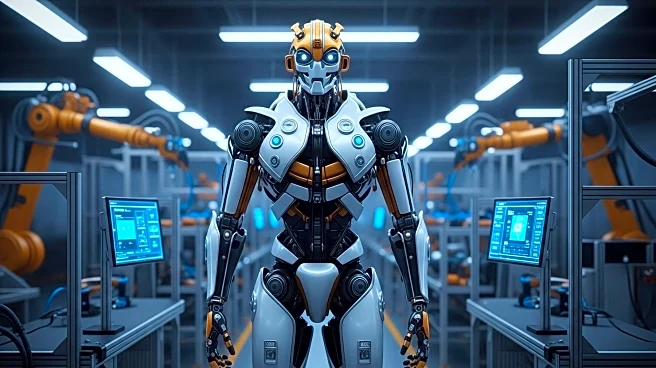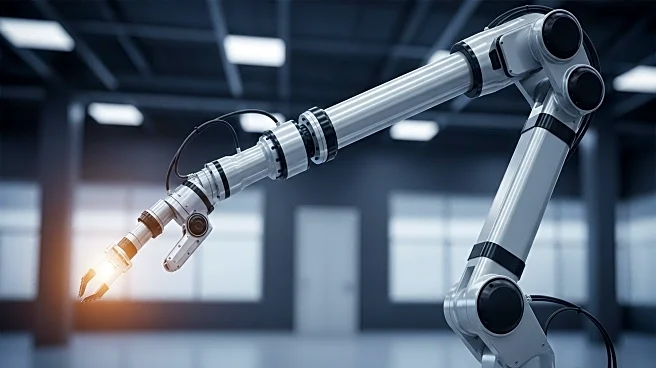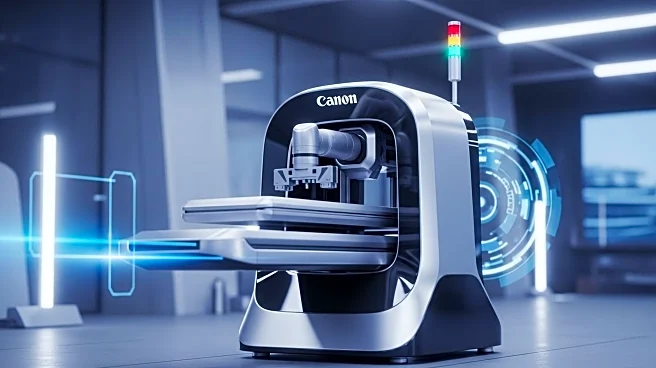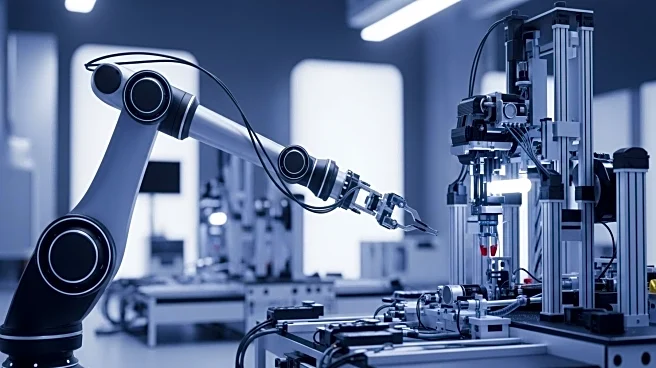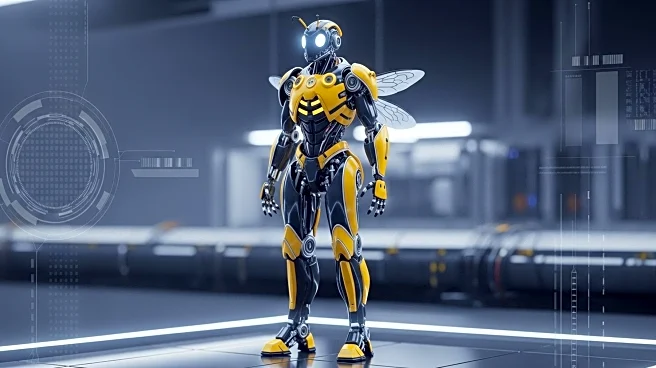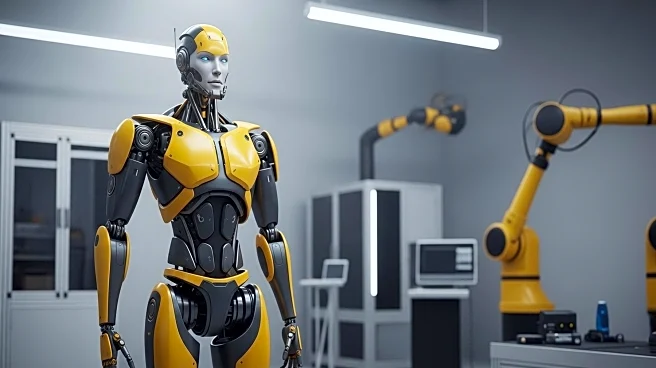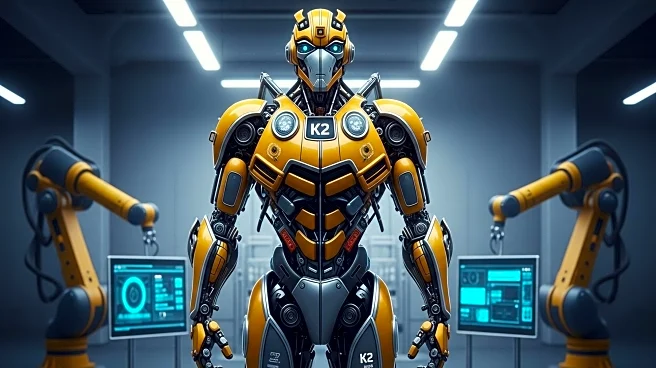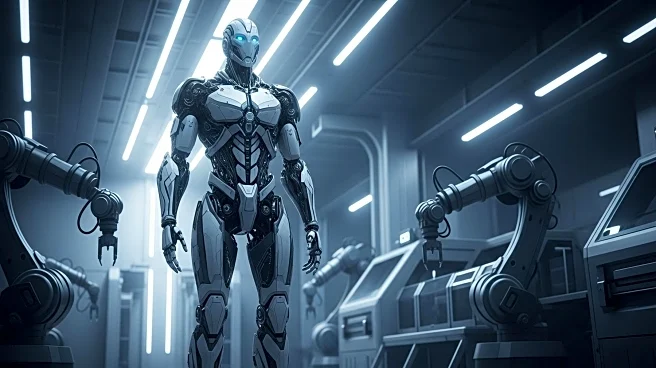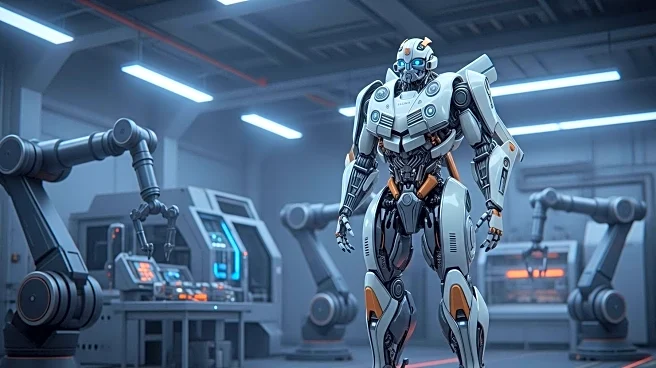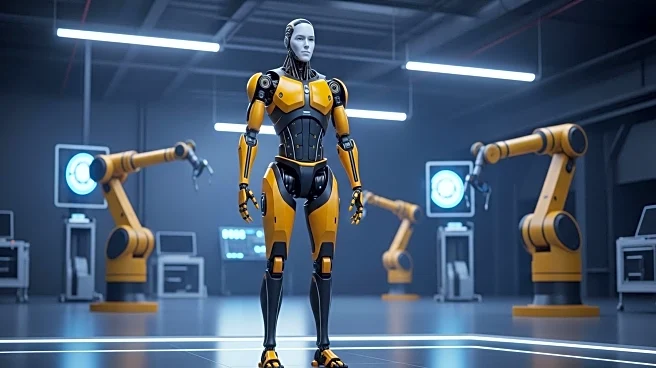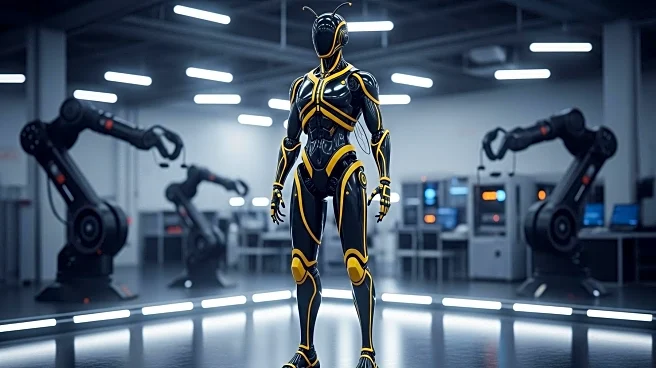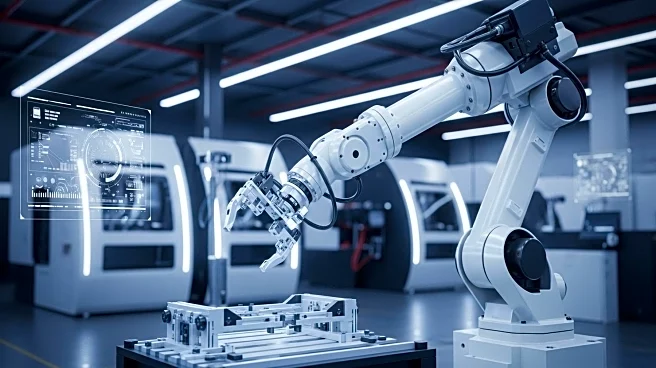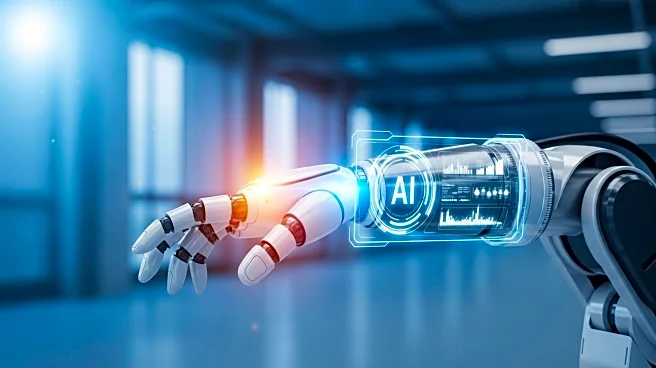What is the story about?
What's Happening?
Shanghai-based Kepler Robotics has commenced mass production of its humanoid robot, the K2 'Bumblebee', marking a significant transition from research prototypes to large-scale deployment. The K2 is touted as the world's first commercially available humanoid robot built on a hybrid architecture, combining different types of actuators and computational structures. This hybrid approach allows the robot to perform tasks locally while utilizing cloud-based resources for more demanding workloads. The K2 Bumblebee is designed for industrial applications, with capabilities such as carrying, loading, and unloading tasks, and can operate for up to eight hours on a single charge. Priced at approximately $34,000, it offers a more affordable option compared to previous prototypes.
Why It's Important?
The mass production of the K2 Bumblebee represents a milestone in the humanoid robotics industry, potentially transforming industrial operations by automating repetitive and high-risk tasks. This development could lead to increased productivity and safety in manufacturing and logistics sectors. By lowering the cost of adoption, Kepler Robotics is making humanoid robots more accessible to businesses, which could accelerate the integration of robotics in various industries. The move also signifies a step towards building a broader ecosystem for humanoid robotics, involving strategic partnerships and investments.
What's Next?
Kepler Robotics plans to scale manufacturing and expand its humanoid robotics ecosystem through collaborations with supply chain partners and strategic investors. The company has already secured framework agreements for several thousand units, indicating strong market interest. As the K2 Bumblebee becomes more widely adopted, it is likely to spur further innovation and competition in the robotics industry, potentially leading to new applications and advancements in humanoid technology.
Beyond the Headlines
The introduction of the K2 Bumblebee could have broader implications for the labor market, as automation continues to replace certain manual tasks. This shift may necessitate workforce retraining and adaptation to new roles that complement robotic capabilities. Additionally, the ethical considerations of deploying humanoid robots in public and private spaces will need to be addressed, particularly concerning privacy and human-robot interaction.
AI Generated Content
Do you find this article useful?
